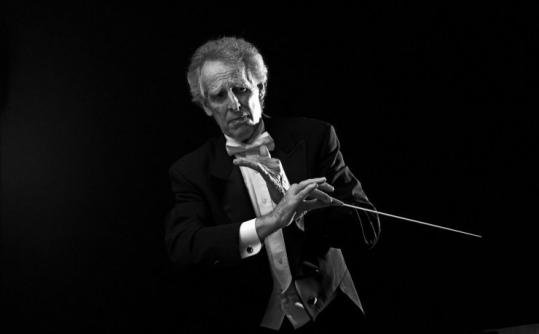Boston Philharmonic soars in Mahler’s “Resurrection” symphony

The music of Mahler is featured in almost every season of the Boston Philharmonic, and recent years have witnessed performances of the composer’s First, Fourth, and Ninth Symphonies.
Friday night at Symphony Hall, Benjamin Zander led the orchestra, guest chorus, and a fine lineup of soloists in a radiant rendition of Mahler’s luminous Symphony No. 2. With its ecstatic journey from death to resurrection, the work was fitting for the Easter holiday.
Mahler’s take on life after death reaches beyond the Christian story. Affected by the sudden death of his friend and mentor, the conductor Hans von Bülow, Mahler turned to the writing of Friedrich Klopstock in hopes of setting his poetry as the final movement of a symphony. The words, supplemented with Mahler’s own writing as well as lines from Des Knaben Wunderhorn, tells of a universal vision of a world beyond the doorways of death. The symphony’s opening funeral march signals the beginning of an hour-and-a half journey from darkness to transcendent light.
Zander is a master of colossal works such as this one. Leading with brisk, energetic gestures, he crafted a performance well attuned to the symphony’s big picture.
Tempos were in turns broad and quick where appropriate, and he built the phrases into sturdy climaxes that resonated in the hall.
Mahler’s music unfolds in contrasts between soft, chamber-like sections and towering passages in the full orchestra. The Boston Philharmonic played it all with aplomb. Textures had multiple dimensions of dynamics, line, and colorful depth. The woodwinds were particularly strong. Peggy Pearson’s solo oboe phrases in the first movement were like a weeping willow. The stings’ tone blazed in the opening statements and glowed softly in the second theme. Zander observed the extended pause after the first movement, which brought additional thoughtful reflection to the work.
In the second movement Ländler, Zander crafted the phrases with a tasteful Viennese rubato. The central section had driving intensity without losing its dance-like grace. Conductors tend to take the Scherzo at a whirling pace, but Zander’s interpretation flowed in a stately tempo, much like that of Otto Klemperer’s recordings of the work. It’s a choice that largely worked. The movement’s klezmer-like phrases retained a snarling humor as they flowed like water in a brook. The central section had a rustic verve, which provided a cheerful escape from the movement’s otherwise pessimistic program that life is futile.
That view is remedied in the final movement, a soaring cantata for orchestra, vocal soloists, and chorus that resembles the conclusion of Beethoven’s Ninth Symphony. Fanfares by the offstage brass, conducted by Benjamin Vickers, sounded otherworldly, while brass players onstage supplied warmth and vigor to the Resurrection theme. The large percussion section thundered in the opening of the boisterous march of the dead.
Bringing a searching humanity to Friday’s performance was a cast of stellar singers. Alto Claudia Huckle is a rising star on the British scene for her interpretations of Mahler’s vocal works and it’s easy to hear why. She sang with a rich, dark voice that brought haunting beauty to “Urlicht.”
The brief soprano solo in the final movement of Mahler’s symphony offers a moment of resplendence. Friday’s performance featured one of Boston’s best singers, Sonja Dutoit Tengblad. Her voice has a ringing clarity, particularly in the upper register, and she delivered her solo in “O glaube” with warm lyricism and intensity.
Chorus pro Musica, prepared by Jamie Kirsch, sang the final movement with soft radiance, the voices coming off with sharp clarity. Mahler’s Second Symphony is a glorious work, and these performers gave it a memorable performance.
 Aaron Keebaugh - Boston Classical Review
Aaron Keebaugh - Boston Classical Review